C.A. Gray's Blog, page 13
November 3, 2023
Christy Novellas, books 7-9
This week’s podcast review comes from this blog review of the Christy novellas, books 7-9
The post Christy Novellas, books 7-9 appeared first on C.A. Gray.
October 31, 2023
Christy
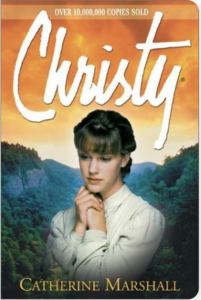
Even though I’ve read this at least once and I think at least twice before, I found that I remembered almost none of it. I’ve been on a “Christy” kick ever since a trip to the Appalachians, listening to this, reading the novellas for kids that I’ve just discovered, and also re-watching the 1990s TV miniseries. The characters are lovable, and all of the versions are quite episodic, so they lend themselves well to a series.
The story follows Christy Huddleston, a 19 year old in the year 1912, who felt after a ‘pitch’ at church that God had called her to be a teacher in the backwoods of Cutter Gap in the Great Smoky Mountains. It’s told as a frame story, beginning with what I gather is the author speaking to her mother–the real life “Christy” I just discovered, though Catherine Marshall’s mother was actually named Lenore. (The intro to the novel was fascinating, to hear Catherine Marshall’s son recount how his grandmother Lenore reacted to the dramatization of her own life!) Apparently a huge percentage was based on life, but it was still decidedly fictionalized in some key points, hence the name change.
Cutter Gap is the poorest of poor areas, where children and adults alike go without shoes even in the snow, and entire families live in single room cabins covered in filth. The mission house where Christy lives is large and clean, though sparse. Christy’s first introduction to these people is an accident that requires the only doctor in the cove, Doctor Neil MacNeill, to literally perform brain surgery on a crowded cabin’s kitchen table. From there, Christy has a number of moments of self-doubt: she’s never taught before and she has nearly seventy student of all ages to contend with. Some of the students perform cruel pranks on others and herself, and she finds herself caught up in generational mountain feuds. But she falls in love with the children, and finds her purpose in them.
The other three supporting characters are David, the preacher, Miss Alice Henderson, a fellow missionary, and Doctor MacNeill. David is set up early on as Christy’s primary love interest, and remains so for much of the book, but on this reading he struck me as… not quite a Pharisee, but perhaps a pretender. His faith seemed paper-thin, but he was afraid to let anyone know it, and seemed frightened to discover it himself. Doctor MacNeill is a prominent rival for Christy’s affections in the novellas and the TV series, but less so in the novel for most of the book; rather, he infuriates her more than not in the novel. He’s openly non-Christian himself, and challenges Christy’s beliefs, which drives her to Miss Alice for answers. Miss Alice is the only one in the story with a deep and abiding faith throughout–her understanding of God is that He is always good, He wants His children to have joy, and the promises of scripture are there for the taking, but they don’t come to pass automatically. It is she who mentors Christy such that she eventually finds the answers to Neil’s questions.
The novel has far more adult themes than the novellas do; key characters died in the novel version, to my surprise, and the blood feud between a few of the mountain families has some really tragic and dark results. But this is the only one actually written by Catherine Marshall, I learned–everything else was just based on her work. She was a wonderful writer.
My rating: *****
Language: none
Sexual content: none
Violence: present, but realistic and not gratuitous
Political content: none
October 27, 2023
The Abolition of Man and The Great Divorce, by C.S. Lewis
Today’s podcast comes from this blog review of The Abolition of Man and The Great Divorce.
The post The Abolition of Man and The Great Divorce, by C.S. Lewis appeared first on C.A. Gray.
October 26, 2023
Methylene Blue
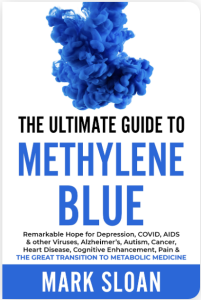
A fascinating topic, and very well researched! Methylene blue has been on my radar in the last many months, but I didn’t know much about it before. What excites me most about it is its potential as a mitochondrial support. I’ve long known that mitochondria are (at least potentially) at the core of nearly every metabolic/chronic illness, but that only gets us so far. Mitochondria make ATP, the body’s energy currency, and any tissue lacking adequate ATP will limp along with subclinical or clinical dysfunction, unless the body gets the signal to destroy that cell (or that mitochondrion) altogether and make a brand new one. The only way I really knew of before to trigger the latter was with fasting, which of course isn’t a long-term option in most cases (with the exception of intermittent, though that too has limited usefulness from my experience.) Mitochondria can easily become poisoned by various environmental or biological toxins, but… then what? Most mitochondrial support I’m aware of gives building blocks needed to potentially help them work better, but if the problem isn’t the lack of that building block, but rather a toxin, now what? Detoxification also requires ATP to be efficient, so now you’re in a bit of a catch-22.
Methylene blue, apparently, offers an alternative pathway for the mitochondria to make the same amount of ATP it would if it were perfectly healthy, bypassing the toxic impediments, while at the same time stimulating the body to make new mitochondria. That’s astounding. There are some drawbacks to be aware of (mostly that the medicine is bright blue, but there are a few others too), but I’m excited about the therapeutic potential!
The reason I only gave the book four stars, though, is because the author tends to be rather bombastic in his writing style. I can appreciate this to a certain degree (he reminds me of a few people I know, and it’s probably quite endearing in person), but it means that sometimes he leaps to extreme conclusions on topics which I happen to know something about. I suspect that if he were a practicing clinician himself, he might be more circumspect–but this tends to make me question his conclusions on topics that are less familiar to me, as well.
My rating: ****
Language: none that I can recall, but there might have been some
Sexual content: none
Violence: none
Political content: none
The post Methylene Blue appeared first on C.A. Gray.
October 20, 2023
Christy, 7-9
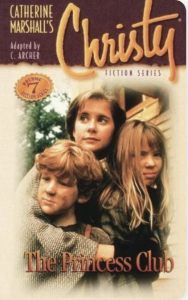
Christy #7: The Princess Club
This episode was a childish morality tale about greed. Ruby Mae and two of her best friends in the cove happen to find gold nuggets in a stream, and begin to call themselves princesses, considering themselves royalty because of their newfound wealth. Not surprisingly, this sets up resentment, jealousy, and hurt among the rest of the children. Meanwhile, a newcomer to the cove comes to stay at the mission house, and Christy has a strong suspicion that the gold is his–but he doesn’t claim it. Just like all the rest of these stories, lessons are learned and things turn out all right in the end.
My rating: ***

Christy #8: Family Secrets
This episode is about racism in the cove. Dr MacNeill sells a piece of his property to a new black family, and both the children and the adults of the cove unite against them, even to the point of physical violence. Only those involved at the mission reach out to befriend them. The family nearly leaves the cove, but eventually one of the little girls of the cove befriends one of the new little girls, and in a crisis, the black family returns good for evil.
My rating: ***
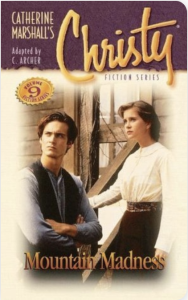
Christy #9: Mountain Madness
This is another episode about a mountain superstition, this time of the Boggin, a bigfoot-like creature that supposedly lives in the mountains. Only after a number of sightings and rumors and even fear on Christy’s own part, it turns out that the Boggin is nothing but a lonely old man. Christy and the Spencers enlist the Boggin (whose name turns out to be Edward) in leveraging the rumors about him to help to right a wrong in the cove– and they make a new friend in the process.
My rating: ***
Language: none
Sexual content: none
Violence: none
Political content: none
The post Christy, 7-9 appeared first on C.A. Gray.
How Emotions are Made, Lisa Feldman Barrett
This week’s podcast review comes from this blog review: How Emotions Are Made.
The post How Emotions are Made, Lisa Feldman Barrett appeared first on C.A. Gray.
October 13, 2023
Christy Novellas, books 4-6
Today’s podcast review comes from this blog review of Christy novellas, books 4-6.
The post Christy Novellas, books 4-6 appeared first on C.A. Gray.
How Emotions Are Made: The Secret Life of the Brain
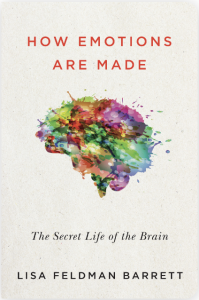
The author seemed to believe that the premise of this book was more revolutionary than I thought it was, to the point where I wondered if maybe I missed something.
Her main premise seems to be that there are no universal emotional pathways in the brain for things like happiness, sadness, fear, anger, etc. Rather, the body has only a very few possible physiologic states that can be mentally attributed to a given emotion, depending upon the person’s thoughts about their cause, and the context. An example that stuck out to me was when she was in school and a colleague to whom she didn’t think she was particularly attracted asked her for a date. She went, and felt various strange things in her gut, and assumed during the date that perhaps she was attracted to him after all… only to later learn that she actually had the early stages of gastroenteritis. It makes the vivid point that we can misattribute physical symptoms for emotions, because there are only so many possible physical manifestations of emotion, so the same ones have to get used over and over. Then it’s up to us to interpret what they mean.
Barrett then references a number of studies with which I was familiar, regarding the universality of emotion in various cultures that have had no contact with the Western world. She makes the point that these studies all essentially “stacked the deck,” teaching the people about Western emotional concepts and then showing them the facial expressions that were affiliated with them. But she makes the point that we are literally incapable of perceiving or even feeling a given emotion until we become culturally aware of it. The examples she gives to back this argument are very unique situations in which a particular complex emotion arises — situations which some cultures define by a single word. I don’t know if I’m convinced that other cultures can’t *experience* that emotion, though I certainly agree that we become far more emotionally intelligent when we possess the breadth of language to define it. I certainly have had the experience in my life of hearing someone describe an emotion, and saying to myself, “Ah-ha! So that’s what I was feeling (and why)!”
What to me was most revolutionary about this book was the author’s concept of the “body budget,” which affects the physical manifestations of emotions which we then have to use our language to define and context to interpret. Our body budgets can be affected by things like our sleep deficits, our blood sugar levels, cortisol levels, etc. Essentially it all goes back to the basic naturopathic building blocks of eating right, exercising, getting enough sleep, spending time with those we love and doing things we love, and balancing our time between work and play. This isn’t exactly new, but it’s a new twist on the concept that the more depleted we are, the more emotional we can become… but then it’s still up to interpret what we are feeling.
My rating: ****
Language: none
Sexual content: none
Violence: none
Political content: none
The post How Emotions Are Made: The Secret Life of the Brain appeared first on C.A. Gray.
October 6, 2023
Christy, Books 4-6
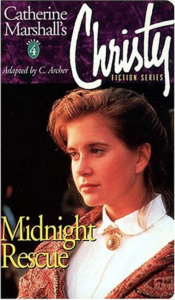
Midnight Rescue: Christy, Book 4
These novellas are such a quick, delightful read – I learned on this one that they are adapted for “young readers,” which explains why they fly so quickly.
The love triangle between Christy, David Grantland and Doctor MacNeill intensifies in this installment, though it’s all told in such a straightforward way that it loses all the tension that might exist in a story written for adults. This story focuses upon Ruby Mae and her obsession with Prince, the Mission house’s stallion. When she goes missing because of Prince, Christy has to go looking for her, and finds herself in danger in the process.
My rating: ****
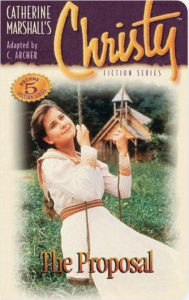
The Proposal: Christy, Book 5
This story opens with a very matter-of-fact proposal scene gone awry. There are none of the nuances of emotional tension that might appear in a book meant for an older audience. Christy considers whether to marry David for awhile, torn between him and Doctor MacNeill, who makes his feelings plain without outright declaring himself, too. Then Christy has an accident that leaves her temporarily blinded, though she doesn’t know whether or not it might be permanent. This leads her to reevaluate everything, including whether or not she is meant to be in Cutter Gap, let alone whether she should be anyone’s wife.
My rating: ****
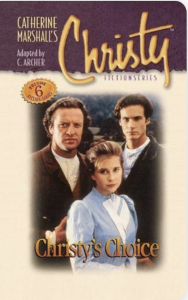
Christy’s Choice: Christy, Book 6
I assumed from the title and the cover here that Christy’s choice would be between Doctor MacNeill and David, but that wasn’t it at all–though that tension persists in every one of the novellas.
What really happens in this one is that Bessie Coburn, Ruby Mae’s best friend, needs an operation that Doctor MacNeill doesn’t have the equipment to perform in the cove. He needs to take her to Asheville to perform it, and asks Christy to come along, since she’s from there and can make it a visit home as well. David doesn’t want to let the two of them go alone, and also uses it as an opportunity to fund-raise for the mission, and Ruby Mae refuses to be left out because Bessie is her best friend. So they all go together.
While in Asheville, Christy remembers all the comforts of home, including an old beau who turns up and tries to woo her right in front of her two current suitors. This causes the doctor and David to team up for once, both believing that Christy will choose to return home, where she is offered a teaching position in a mission school right in her own backyard. Christy herself doesn’t make up her mind until an accident at the very end causes her to realize what she values most.
My rating: ****
Language: none
Political content: none
Violence: none
Sexual content: none
The post Christy, Books 4-6 appeared first on C.A. Gray.
Christy, Novella 1-3, Catherine Marshall
Today’s podcast reviews come from these blog reviews of Christy, Books 1-3.
The post Christy, Novella 1-3, Catherine Marshall appeared first on C.A. Gray.



